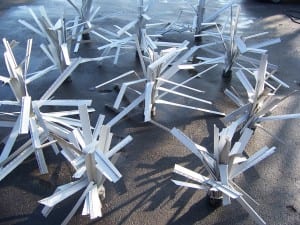
Poverty alleviation and biodiversity conservation are inextricably linked in the Sekong Basin of Lao P.D.R., where freshwater fisheries are critical for ensuring food security and the economy. Here fish contributes 61 percent of the protein intake of these communities, and community health and livelihoods are being threatened by a loss of fisheries productivity and diversity due to increased regional demand for fish, forest products and electricity. Dozens of unique habitat models at fishiding.com
As part of the Indo-Burma Hotspot strategy, CEPF awarded the World Wildlife Fund for Nature (WWF) $200,000 to help protect the critical freshwater habitats of Lao P.D.R.’ Starting in June 2010 and ending this past May, the project aimed to demonstrate to policy makers the importance of healthy freshwater ecosystems to local communities in the Sekong Basin by fostering the development of community groups to protect freshwater habitats. Based on the Integrated River Basin Management (IRBM) approach, fisheries co-management was arranged between local communities and the government, which gave communities that use fisheries the authority to demarcate protected areas and enforce village regulations within them.
The project was successful in establishing communal fishing conservation areas in the Sekong Basin for 24 villages along 500 kilometers of riparian habitat. WWF worked with these communities to draft fish conservation zone management plans that gained endorsement from the Laos Department of Livestock and Fisheries (DLF) within the Ministry of Agriculture and Forestry (MAF). Additionally, the biodiversity and ecosystem services values of the Sekong Basin were integrated into development planning, both at the local level in the fisheries and agriculture sectors, and at the national level in terms of hydropower planning.
Not only is the Sekong Basin important for human well-being, but the tributary also supports populations of at least 15 CEPF priority species, including Asian giant softshell turtles, Asiatic softshell turtle, giant freshwater stingrays, Jullien’s golden carp, green peafowl, white-winged duck, and Asian elephant. In addition to simply increasing the length of river under community protection, the project also enhanced connectivity between existing protected areas, thereby bringing conservation benefits to migratory fish species moving between management zones.
The positive impact on the local communities and fisheries was tremendous, as 75 percent of the communities reported that fish had increased in the fish conservation zones. According to Dr. Victor Cowling, landscape manager with WWF-Laos, “Communities consistently report increased availability of wild fish within one or two years of conservation zones being established. This aquatic resource conservation benefits peoples’ livelihoods and nutrition, with fishing becoming more rewarding for food and for sale.”
 Even though the project end date has passed, the freshwater protected areas established continue to receive support from the DLF. At the community level, official recognition of communities’ traditional rights over their fishing area provides them with the enhanced power to exclude outsiders using destructive fishing practices. Over time the increase in fish and other aquatic products will help create strong incentives for these communities to continue engaging in freshwater habitat protection and biodiversity conservation.
Even though the project end date has passed, the freshwater protected areas established continue to receive support from the DLF. At the community level, official recognition of communities’ traditional rights over their fishing area provides them with the enhanced power to exclude outsiders using destructive fishing practices. Over time the increase in fish and other aquatic products will help create strong incentives for these communities to continue engaging in freshwater habitat protection and biodiversity conservation.
Dr. Cowling noted that the fish conservation zone approach is already being replicated in a project funded by Oxfam Novib in three central provinces of Laos. Additionally, the monitoring, evaluation, and fish catch monitoring methods partly developed during the Sekong project are being used in a new WWF project in Siphandrone, one of the three most important wetland sites on the lower Mekong.”
To learn more about the Indo-Burma Hotspot, read this article on the CEPF Donor Council’s decision to reinvest there.by Mandy DeVine
